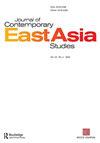IF 1.4
Q1 AREA STUDIES
引用次数: 1
摘要
本文分析了华国锋对后毛时代初期中国转型的贡献。在探讨中心问题时,讨论了五个子问题:发生了什么样的转变?华为什么发起转型?华是如何使这种转变合法化的?为什么他能够发起它?为什么他会在这么短的时间内下台?毛死后不久,华国锋开始了一条发展稳定的新道路。由于其早期的职业生涯,华是一个始终如一的发展主义者,也是一个平衡的“政治通才”。华采取了“政治证伪”策略,以毛的名义进行了事实上的去毛化。制度权力,他作为毛接班人的特权,以及广泛的支持联盟,给了华足够的权力和权威来领导中国的转型。然而,华也有他的局限和弱点。华的贡献是巨大的,但不应高估。本文章由计算机程序翻译,如有差异,请以英文原文为准。
Hua Guofeng and China’s transformation in the early years of the post-Mao era
ABSTRACT This article analyzes how Hua Guofeng contributed to China’s transformation in the early years of the post-Mao era. In approaching the central question, five sub-questions are discussed: What kind of transformation took place? Why did Hua initiate the transformation? How did Hua legitimize the transformation? Why was he able to initiate it? And why did he step down in such a short period? Soon after Mao’s death, Hua Guofeng pursued a new course of development and stability. Due to his early career, Hua was a consistent developmentalist as well as a balanced “political generalist.” Hua employed a strategy of “political falsification” and carried out de facto de-Maoization under Mao’s name. Institutional power, his privilege as Mao’s successor, and a broad supporting coalition gave Hua enough power and authority to lead China’s transformation. However, Hua had his limits and weaknesses. Hua’s contribution was significant, but it should not be overestimated.
求助全文
通过发布文献求助,成功后即可免费获取论文全文。
去求助
来源期刊

Journal of Contemporary East Asia Studies
Social Sciences-Cultural Studies
CiteScore
2.50
自引率
0.00%
发文量
10
审稿时长
6 weeks
 求助内容:
求助内容: 应助结果提醒方式:
应助结果提醒方式:


